Unlocking your creative potential as an artist can be both exhilarating and challenging. Whether you’re a seasoned creator or just starting your journey, finding the right balance of inspiration, technique, and mindset is crucial. In this guide, we’ll explore proven creative tips for artists that can transform your artistic journey, helping you overcome creative blocks, refine your style, and discover the confidence to push boundaries. From mastering the 5 Cs of art to understanding the 7 rules of artistic creation, this article offers actionable advice for artists at every level. Learn how to stay motivated, experiment with new techniques, and cultivate a mindset that thrives on creativity. Let’s dive into the world of artistic exploration and uncover the secrets to unleashing your full potential.
Key Takeaways
- Understand Artist Syndrome: Recognize its signs, like all-consuming passion and financial strain, and learn effective coping strategies to avoid burnout.
- Prioritize Mental Health: Artists face higher risks of mental health issues like Major Depressive Disorder and anxiety. Seek support and don’t hesitate to reach out for help.
- Leverage Your Brain’s Strengths: Artists’ unique brain structures enhance creativity and problem-solving, giving you a natural edge in your craft.
- Utilize Resources: Explore supportive communities and tools like those offered at Artful Journey to refine your skills and stay motivated.
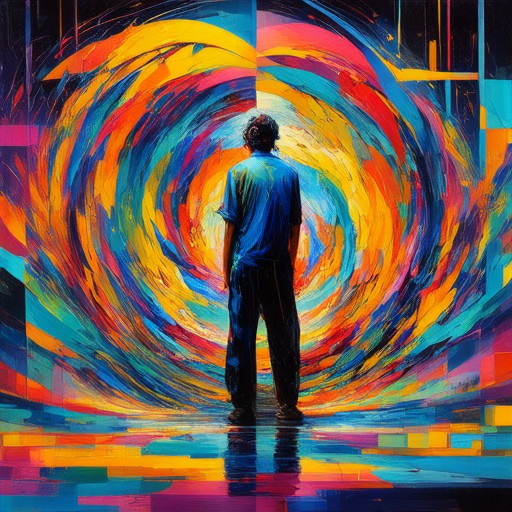
How to Improve Creativity as an Artist
Improving creativity as an artist involves a combination of mindset, practice, and exploration. Here are some effective strategies:
- Set Personal Goals : Define what you aim to achieve and how you want your art to evolve. This clarity can unlock new avenues for innovation.
- Explore Different Mediums : Experiment with varied materials or techniques beyond your usual comfort zone to stimulate fresh ideas.
- Seek Inspiration Widely : Draw motivation from diverse sources, including art, film, music, and nature, to broaden your creative horizons.
- Practice Regularly : Consistent creation keeps your creative muscles active, even if the results aren’t immediately perfect.
- Learn from Others : Study the works and techniques of influential artists to understand different approaches and styles.
- Embrace Failure : Recognize that creative endeavors often involve trial and error. Learn to view setbacks as part of the journey.
- Stay Curious and Open-Minded : Approach every project with curiosity, asking questions and allowing yourself to experiment freely.
- Collaborate with Others : Partnering with fellow artists can introduce new perspectives and ideas, enriching your creative process.
- Maintain a Healthy Lifestyle : A balanced diet, regular exercise, and sufficient sleep contribute to overall well-being, which supports creativity.
The 5 Cs of Art
The concept of the “5 Cs of Art” is often used to describe the essential elements that define the art world and its practices. These Cs provide a framework for understanding the dynamics of art creation, appreciation, and cultural impact. Below is a detailed breakdown of each component:
- Collection : A collection refers to the gathering and ownership of art pieces. Personal collections allow individuals to curate their own unique showcases, while public collections, such as those in museums, preserve and display artwork for broader access. Digital platforms have made collecting art more accessible, enabling people to build virtual collections and explore diverse artistic movements.
- Community : The art community encompasses the collective body of artists, collectors, dealers, critics, and institutions that contribute to the art world. Online forums, social media groups, and art fairs provide opportunities for artists to connect, share ideas, and collaborate. Building a strong community fosters innovation and supports emerging talents.
- Culture : Art is deeply intertwined with cultural identity. Different cultures have unique artistic expressions, from traditional paintings to modern installations. The globalized nature of contemporary art allows for cross-cultural dialogue, blending styles and perspectives that challenge and enrich traditional norms. Cultural exchange often drives artistic evolution and expands the boundaries of what is considered art.
- Collaboration : Artists frequently work together, either as part of collaborative projects or through partnerships with galleries, museums, or other entities. Collaborative efforts can lead to innovative works and provide opportunities for artists to learn from each other. Such collaborations also benefit institutions by bringing diverse perspectives to their exhibitions and programs.
- Creativity : At the core of art lies creativity—the ability to think critically, imagine, and express ideas visually. Creativity is both a personal journey and a reflection of cultural values. Over time, technological advancements have expanded the mediums through which creativity is expressed, offering new avenues for artists to experiment and innovate.
By understanding these five components, we gain insight into the multifaceted nature of art and its role in shaping societies. Each element contributes uniquely to the art ecosystem, ensuring its continued relevance and evolution.
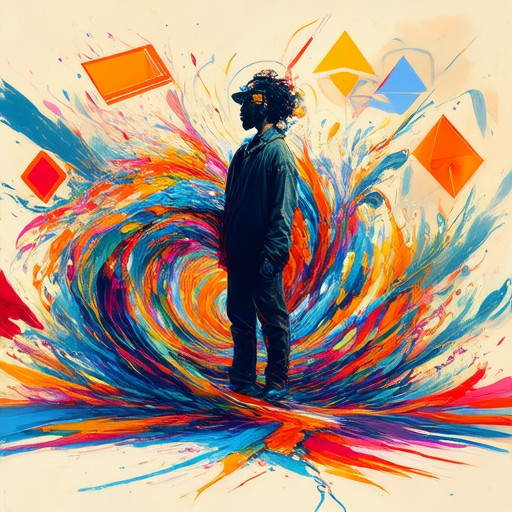
The 7 Rules of Art
The principles of art guide creators in crafting harmonious and impactful works. These seven rules—balance, movement, rhythm, pattern, contrast, unity, and emphasis—are essential for artists to communicate their vision effectively.
1. Balance
Balance ensures symmetry and equilibrium in a piece, preventing it from appearing cluttered or chaotic. It involves distributing elements evenly around a central point or axis, creating visual harmony.
2. Movement
Movement adds dynamism to art, drawing the viewer’s attention through directionality and flow. Whether subtle or dramatic, it guides the eye across the canvas, creating a narrative or emotional impact.
3. Rhythm
Rhythm is the recurring pattern of elements, creating a sense of rhythm and pulse. It can be visual, auditory, or tactile, influencing the viewer’s perception and emotional response.
4. Pattern
Pattern provides structure and repetition, often forming textures or designs. It can be geometric, organic, or abstract, serving as a focal point or background element.
5. Contrast
Contrast sharpens visual interest by juxtaposing elements with differing lights, colors, or textures. It creates depth, highlights details, and draws attention to specific areas of the artwork.
6. Unity
Unity binds the artwork together, ensuring all components cohesively relate. This principle fosters a sense of wholeness, guiding the viewer’s gaze and reinforcing the artwork’s theme.
7. Emphasis
Emphasis highlights key subjects or themes, making them stand out. Through color, shape, or scale, it directs the viewer’s focus, conveying the artwork’s primary message or intention.
By mastering these principles, artists can create works that resonate emotionally and visually, leaving a lasting impression on the observer.
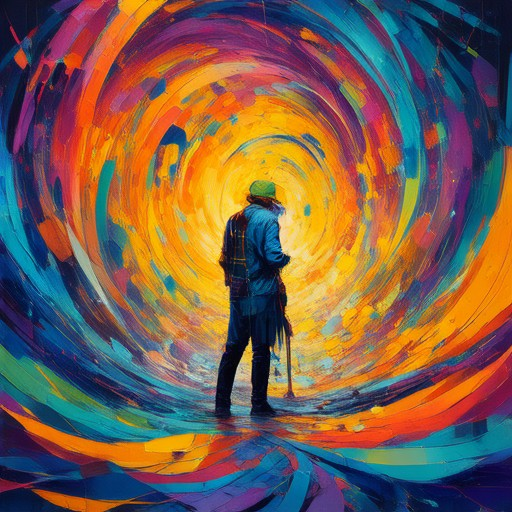
What is Artist Syndrome?
Artist syndrome, often referred to as struggling artist syndrome, is a complex social and psychological condition characterized by the overwhelming dedication of one’s time, energy, and resources to pursuing an artistic ideal without a clear pathway to achieving commercial success or recognition. This syndrome typically manifests among individuals who are deeply passionate about their craft but struggle to reconcile their artistic aspirations with the realities of a competitive and often unpredictable market.
Key Characteristics of Artist Syndrome:
- All-consuming Passion : Artists experiencing syndrome often immerse themselves completely in their work, neglecting personal boundaries, relationships, and even basic self-care. This level of commitment can lead to burnout and isolation.
- Financial Strain : Many artists struggle to make a sustainable income from their work, leading to chronic financial stress. This financial instability can exacerbate feelings of failure and frustration.
- Perfectionism and Unmet Expectations : Artists frequently set high standards for their work and often compare themselves to successful peers. This can lead to dissatisfaction and a sense of inadequacy, even when achieving notable progress.
- Emotional Toll : The syndrome can take a significant emotional toll, leading to anxiety, depression, and feelings of alienation from mainstream society.
Causes and Contributing Factors:
- Lack of Clear Direction : Many artists lack a concrete plan or business strategy for their career, making it difficult to measure success or progress.
- Social Isolation : Artists often work independently, which can limit opportunities for collaboration, mentorship, and support from peers.
- Market Realities : The art world can be highly subjective, with limited opportunities for recognition and financial reward compared to other industries.
- Financial Uncertainty : The unpredictability of income and the low likelihood of achieving substantial wealth can deter many artists from pursuing their passion full-time.
Effects on Individuals and the Art Community:
- Burnout and Exhaustion : Prolonged exposure to the demands of artist syndrome can lead to physical and mental exhaustion, reducing creativity and productivity.
- Stigma and Misunderstanding : The term “struggling artist” has become a stereotype, often implying that artists are underachievers or unable to succeed. This stigma can discourage artists from seeking help or acknowledging their struggles.
- Impact on Creativity : The pressure to constantly produce high-quality work while dealing with financial instability and emotional challenges can hinder an artist’s ability to create meaningfully.
Coping Strategies and Solutions:
- Setting Realistic Goals : Artists should define achievable objectives and regularly evaluate their progress. This helps in maintaining motivation and preventing burnout.
- Seeking Support Networks : Joining communities of fellow artists can provide emotional support and practical advice. Online forums, local art groups, and workshops can be valuable resources.
- Exploring Alternative Income Streams : Diversifying income sources, such as teaching art classes or selling merchandise, can alleviate financial pressure and provide stability.
- Practicing Self-Care : Prioritizing mental health is crucial. Artists should engage in activities that recharge their creativity and overall well-being, such as exercise, meditation, and hobbies outside of their art.
- Challenging Stereotypes : Artists should advocate for a more nuanced understanding of their experiences. By sharing their stories, they can help dismantle harmful stereotypes and encourage others to seek support.
For further reading, explore the resources available at Creative Blobs and The Art League , which offer in-depth insights and community support for artists navigating similar challenges.
What Mental Illness Is Most Common Among Artists?
Several mental health conditions are commonly reported among artists, with Major Depressive Disorder (MDD) being one of the most frequently cited. Studies have shown that artists may experience higher rates of MDD compared to the general population.
- Major Depressive Disorder (MDD): Research indicates that artists, particularly those in fields like writing, painting, and music, are at a higher risk of developing MDD. This condition can manifest due to the inherent pressures of creativity, financial instability, and societal expectations surrounding artistic endeavors.
- Anxiety Disorders: The constant stress of meeting deadlines, navigating creative blocks, and dealing with criticism can lead to heightened anxiety levels among artists. Generalized Anxiety Disorder (GAD) and Social Anxiety Disorder (SAD) are frequently reported.
- Substance Abuse: Artists may turn to alcohol, drugs, or other substances as coping mechanisms for stress and emotional turmoil. This can lead to substance use disorders, which are often comorbid with mental health conditions like depression and anxiety.
- Bipolar Disorder: The intense emotional highs and lows associated with artistic expression can sometimes cross into the diagnostic criteria for Bipolar I or II Disorder. Artists may experience manic episodes or severe mood swings.
- Eating Disorders: Body image concerns and perfectionism, coupled with the pressure to create visually appealing work, can contribute to eating disorders among artists.
- Post-Traumatic Stress Disorder (PTSD): Artists who have experienced traumatic events may find it difficult to process their experiences, leading to PTSD symptoms. Art can sometimes serve as a medium for expressing and coping with trauma.
Research from the Journal of Affective Disorders supports these findings, highlighting the association between artistic professions and higher prevalence of mental health conditions. Artists may also experience increased social isolation, which can exacerbate feelings of loneliness and depression.
It’s important to recognize that seeking help for mental health is a vital step toward recovery. Artists should not feel stigmatized for seeking professional assistance, as addressing mental health is a crucial part of maintaining overall well-being.
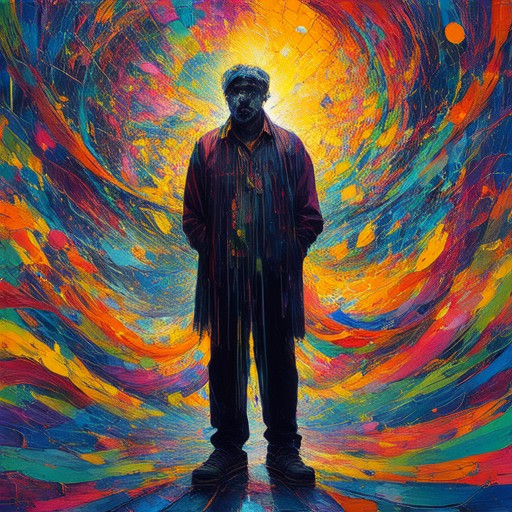
Why Are Artists’ Brains Different?
Artists possess distinct brain structures and functional differences that set them apart from non-artists. These differences are rooted in how their brains process visual information, perceive the environment, and engage in creative thinking.
Differential Brain Structure and Function
- Posterior Cortex Activation : Studies indicate that artists exhibit heightened activity in the posterior cortex, the region responsible for processing visual information. This increased engagement allows artists to perceive the whole visual field simultaneously, encompassing shadows, contours, and spatial relationships that may escape non-artists.
- Right Hemisphere Dominance : The right hemisphere of the brain, which handles spatial perception and integration of sensory inputs, appears more active in artists. This dominance contributes to their ability to synthesize complex visual information into cohesive compositions.
- Limbic System Interaction : The limbic system, involved in emotional processing and memory, plays a crucial role in artists. This interaction likely enhances their capacity for emotional expression and recall of visual details, which are vital for creative work.
Creativity and Problem-Solving
- Prefrontal Cortex Activity : The prefrontal cortex, which governs executive functions like decision-making and problem-solving, is more active in artists. This heightened activity supports their ability to innovate and approach problems creatively.
- Neural Plasticity : Artists often exhibit greater neural plasticity, allowing their brains to adapt and strengthen certain areas through practice. This adaptability enhances their spatial reasoning and visual processing skills over time.
Impact on Daily Life and Proficiency
- Visual Memory and Detail Processing : Artists tend to have superior visual memory, retaining details and spatial relationships more effectively. This capability aids in creating accurate representations and understanding three-dimensional forms.
- Unique Problem-Solving Approaches : Their brains’ distinct wiring leads to innovative thinking and problem-solving strategies, often resulting in unconventional solutions and perspectives.
Practice and Professional Comparisons
- Role of Practice : The neural pathways in artists’ brains are often reinforced through consistent practice, further honing their visual processing and creative muscles.
- Cross-Domain Skills : Some studies suggest that artists may excel in other spatially oriented tasks, such as mathematics or engineering, due to their advanced spatial reasoning abilities.
Conclusion
The unique brain structure and functionality of artists provide them with a distinct advantage in perceiving and manipulating visual information. These differences foster creativity, spatial awareness, and problem-solving skills, contributing to their ability to produce original and impactful artwork. To harness and refine these abilities, we encourage artists to explore resources and techniques available at Artful Journey , offering articles, tutorials, and insights tailored for artists of all levels.
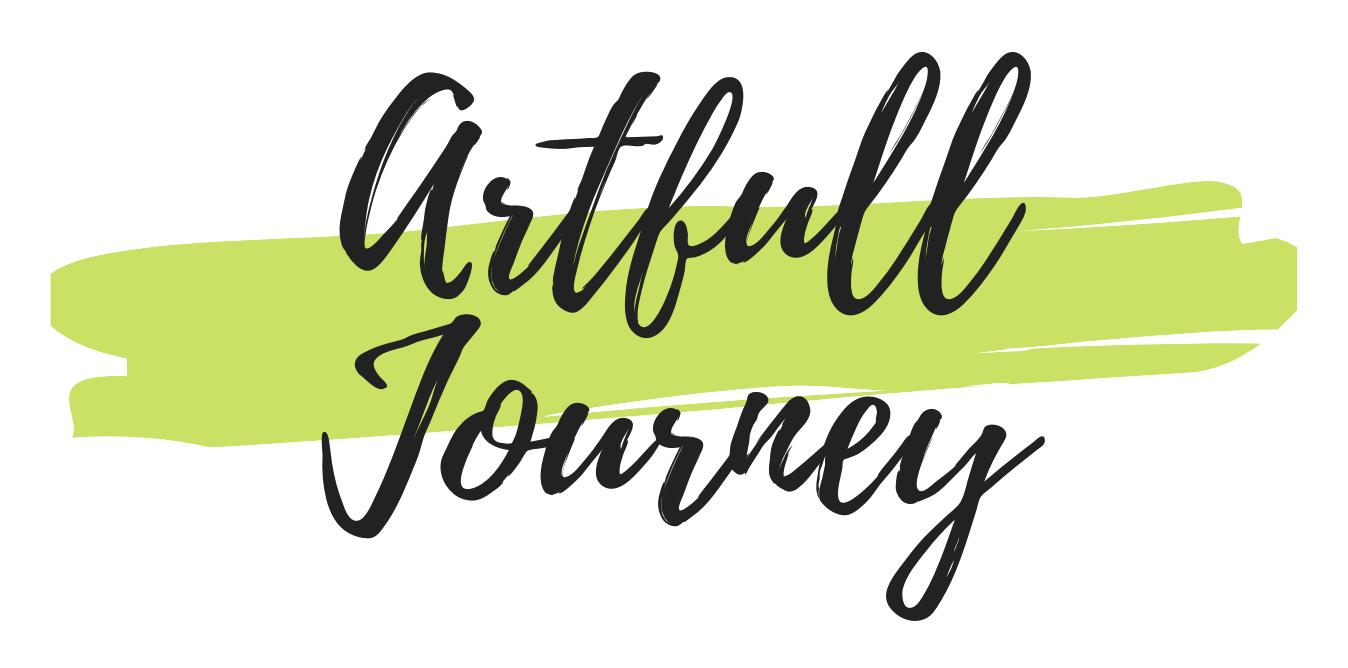



0 Comments